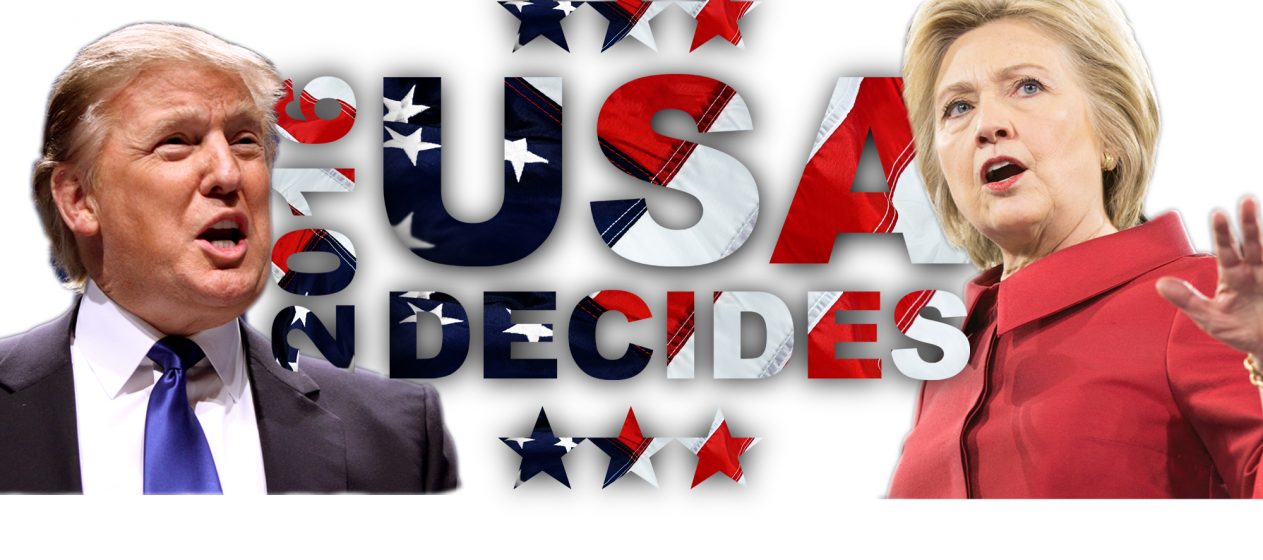Donald Trump will become the 45th President of the United States in January, but will he actually be able to carry out his agenda? Nigel Bowles writes that he will largely be able to. In the areas of trade, security, taxation and judicial appointments Congress will struggle to constrain him under current law and politics. Changing immigration law and reforming the Affordable Care Act are likely to prove more challenging. Nonetheless, during the first year of the Trump presidency American politics is likely to give the appearance of being what it only rarely is: a presidential system. For better or for worse, President Trump really will be in charge.
The United States constitution is Madisonian in design and spirit. Separation of powers and federalism in combination are the structure against which, through which, and by which American politics plays out. Much else matters: party, ideology, public opinion, crises external and internal, leadership’s quality of imagination and purpose, especially. But the system’s architecture is Madisonian. It is not (not usually, at least) a presidential system. Instead, federal government comprises separate but coordinate institutions sharing in authority and in power. Article I of the US Constitution places Congress first in this separated Madisonian order. The symbolism of first place reflects Congress’s abundant richness in authority.
Yet Congress’s authority is limited by recurrent and systematic collective action problems. Those problems spring from Congress’s bicameralism, from its four-party organisation across the two chambers, and from its committee structure. They arise, too from electoral bases of legitimacy: from Senators’ identifications with state interests and cultures, from Representatives’ dependence upon their districts’ majority party voters and party activists for biennial re-election. The collective action problems are exacerbated in the early twenty-first century by ideologically distinct, and typically hostile, Congressional parties; and they are complicated by clashing personal ambitions of legislators. These constraints upon Congress’s authority in turn limit its political effectiveness and, accordingly, its collective capacity to bring about intended effects – in other words, its political power.
Presidents, by contrast, have a narrower base in constitutional authority. Hence Richard Neustadt’s wise insistence that the word with which to begin analysis of the presidency is ‘weak’. But no President suffers collective action problems of the kind that afflict the bicameral Congress. As George W. Bush expressed the point, the President has the distinct advantage of not having to negotiate with himself. No President in recent times has exploited that advantage more than President Obama, whose policy achievements have owed much to his powers not of persuasion but (in national security matters especially) of unilateral decision by means of executive orders. Obama’s master-class in what William Howellcharacterised as ‘power without persuasion’ should give Madisonians among us pause as we contemplate what is about to unfold in Washington under a President of different temper and purpose. What might President Trump do by executive orders and other means of unilateral action?
No one knows what President Trump will seek to do to international trade agreements, to immigration laws, to the United States’ network of bilateral and collective defence agreements, to the Paris Agreement on Climate Change, to the fragile condition of race relations in the United States, or to the Affordable Care Act. Nor, in all probability, does he. But I make the assumption that by his policy pronouncements on the campaign trail Trump set a broad strategic direction for the United States (that is a much more plausible assumption than its converse). Such a strategy would appear to have six major components: protectionism, expressed in withdrawal from NAFTA, and the imposition of punitive tariffs upon Mexico and China; indifference (at best) and hostility (at worst) to NATO and other US-led international security structures; revision of the tax code to eliminate the federal inheritance and gift taxes, to cut the highest marginal rates on income tax, and to reduce tax on corporate revenue and on capital gains; removal of unauthorised immigrants (estimated by government and non-government organizations at approximately 11 million persons); the nomination of conservatives (however defined) to federal court judgeships; and abolition of the Affordable Care Act. The consequences for international stability and an American-sponsored liberal international trade order are profoundly important matters. So, too, are the consequences for the distribution of post-tax income in the United States, for the resilience of cross-border supply chains, and for long-term economic growth. But, important as they are, these questions are not my concern here. The question, rather, is whether the Madisonian structure of American government will obstruct him in his strategic purposes as it usually obstructs presidents bent upon changing the order that they inherit.
Article I, Section 8 of the US Constitution grants international trade authority exclusively to Congress. Yet Congress has repeatedly delegated that authority to Presidents in the expectation that it would be used for the purpose of tradeliberalisation. Now, Trump might use other provisions in trade statutes for the purpose of trade restriction. Statutes written by previous Congresses will permit Trump to impose tariffs of whatever size he wishes upon whichever trading partners he has in his sights. Some statutory provisions limit tariff imposition either as to size or duration or both. Others, of which sections 122 and 301 of the 1974 Trade Act are examples, do more. Section 122 permits the president to address ‘… large and serious United States balance of-payments deficits’ either by a tariff of up to 15 percent, or quantitative restrictions, or both for up to five months against one or more states having balance of payments surpluses with the US. Section 301 gives the President extensive authority to impose punitive tariffs for a range of reasons including a manipulated exchange rate – a point that might be of particular significance if Trump is serious about seeking to penalise China.
The Trading with the Enemy Act, the 100th anniversary of whose passage into law will be marked in the year that Donald Trump becomes President, remains in force. It permits the President to regulate international commerce in all its forms, and to seize foreign assets. That the United States is not currently in a state of war declared by Congress will not prevent President Trump lawfully using the Act as the basis for punitive action against trading partners. Whilst Congress could legislate to restrict the President’s freedom to act in matters of trade, it will not do so – not, at least, in the short run. What President Trump decides that he wants to do in matters of trade in 2017, he will do. There might be dire consequences (not least for American workers and firms) if he carries out his noisy threats. But that he has the constitutional authority to act in that way is plain.
Nor is Trump’s authority externally limited to trade policy. The Constitution’s framers having written no rules governing the termination of Treaties, the question about President Trump’s right under the constitution to abrogate Treaties remains to be settled. But he has on his side the Federal District Court case of Goldwater v. Carter (1979) by which President Carter’s authority unilaterally to nullify the Sino-American Defense Treaty of 1954 was upheld. That case does not close off to litigation the broader question of treaty termination, but President Trump will have the opportunity to set and execute the agenda before opponents have organised themselves to litigate the case(s).
Trump does not even need to rely upon the contentious case of Goldwater v. Carter to give legal force to his proclaimed intention to disrupt international trade and security regimes. Article 2205 of NAFTA, for example, grants any party to it the right to withdraw six months after giving other parties six months notice. Similarly, Article 13 of the North Atlantic Treaty provides that any party may withdraw twelve months after giving notice. Decisions about withdrawal from NAFTA and NATO would formally lie within the President’s authority. Congress would have no available constitutional ammunition.
Achieving his objectives in taxation is likely to be straightforward despite Congress having monopoly authority in writing tax law. The most obvious mechanism, which House Speaker Paul Ryan and Senate Majority Leader Mitch McConnell will set out for the President-elect, will be a Reconciliation Bill by which, because such bills are exempt from filibuster provisions in the Senate, spending and revenue-raising decisions can be driven through not just the House but also the Senate on majority votes. Such a use of the Reconciliation procedure would be immensely consequential: the Tax Policy Center estimates that the result of Trump’s proposed tax changes would be a reduction of annual federal tax revenue by 4 per cent of GDP.
So for three of the President-elect’s apparent purposes (trade, security, taxation), Congress neither can nor may constrain him under current law or politics: in the short-term, the forty-fifth President will be able to get his way. Changing immigration law will be harder, not least because Mr. Trump will discover that building walls is an expensive way of damaging relations with a trading neighbour. But Trump can still act in other ways: he can by executive action accelerate removal of illegal immigrants. His median (and probably his marginal) voter will cheer him on, with the result that even more moderate Congressional Republicans will not be minded to protest.
Reforming the Affordable Care Act will be much harder work. The Congressional majority favouring its abolition (removing the subsidies to the poor; and abolishing the individual mandate) is easy to excite. But electoral politics dictates that the ACA must be replaced with something that can be presented as an improvement. That is a technical problem without easy political solution since almost all improvements would require larger federal subsidy that Republicans will be reluctant to concede. As a result, American health-care is likely to continue to be expensive, and to become even less accessible to the poor.
We are left with Mr. Trump’s apparent resolve to appoint very conservative persons to the Federal bench. That he can and will do, subject only to the approval of the US Senate. But are not sixty votes required to confirm such nominations? The answer is that since November 2013 a simple majority has sufficed because of the Senate’s decision to end the use of the filibuster in respect of all nominees to Federal judicial and executive branch positions other than to the Supreme Court itself. With a Republican majority in the Senate, Mr. Trump should have little difficulty in doing what he wants with (and, perhaps, to) Federal courts.
The Madisonian order will in all probability outlive Trump’s presidency, but it is likely in the early part of his term to be in abeyance. Successive Congresses’ delegation to Presidents of extraordinary powers over trade, and the next Congress’s domination by exceedingly conservative Republican party organisations imply that the crucial first year of Mr. Trump’s presidency could be a time of sharp changes in America’s relations with the world – if that is what he wishes. For a while, American politics will give the appearance of being what it only rarely is: a presidential system. For better or worse, Mr. Trump really will be in charge, pen in hand to sign executive orders to give effect to his will.
This post was originally published on the Constitution Unit blog and is re-posted with permission.





